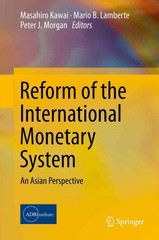Question
In a closed-economy aggregate demand-aggregate supply model, consumption is a (possibly nonlinear) function of disposable income (Y-T) and real wealth (W/P). There is a progressive
In a closed-economy aggregate demand-aggregate supply model, consumption is a (possibly nonlinear) function of disposable income (Y-T) and real wealth (W/P). There is a progressive tax system so T=T(Y) with the derivative between 0 and 1. Investment is a (possibly nonlinear) function of the interest rate. Contrary to the usual assumption, government purchases of goods and services are not exogenous. Instead, the government automatically adjusts spending on public works depending on how much unemployment there is, so G is a function of the difference between GDP and full employment GDP: . The nominal money supply M is exogenous; in(), '<0 equilibrium the real money supply mp equals demand for balances l(y,r). (inverse) aggregate function is: . simplicity, some of arguments functions have been excluded - but otherwise apply usual assumptions to various derivatives (so you can sign comparative static). write out total differentials three equations in ad-as model given above and use them find static effect on price level an increase full employment gdp. assist described are below: =(), ()+()+() =(,) >
Step by Step Solution
There are 3 Steps involved in it
Step: 1

Get Instant Access to Expert-Tailored Solutions
See step-by-step solutions with expert insights and AI powered tools for academic success
Step: 2

Step: 3

Ace Your Homework with AI
Get the answers you need in no time with our AI-driven, step-by-step assistance
Get Started


